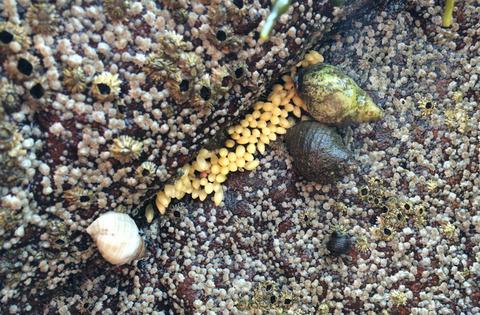当前位置:
X-MOL 学术
›
Funct. Ecol.
›
论文详情
Our official English website, www.x-mol.net, welcomes your feedback! (Note: you will need to create a separate account there.)
Sex‐specific differences in the response of prey to predation risk
Functional Ecology ( IF 5.2 ) Pub Date : 2020-04-12 , DOI: 10.1111/1365-2435.13569 Sarah C. Donelan 1 , Geoffrey C. Trussell 1
中文翻译:

猎物对捕食风险反应的性别差异
更新日期:2020-04-12
Functional Ecology ( IF 5.2 ) Pub Date : 2020-04-12 , DOI: 10.1111/1365-2435.13569 Sarah C. Donelan 1 , Geoffrey C. Trussell 1
Affiliation

|
- The non‐consumptive effects of predation risk can strongly affect prey behaviour and fitness with emergent effects on community structure and ecosystem functioning. Prey may respond differently to predation risk based on key traits such as sex, but the influence of sex‐specific variation is typically explored in species with strong sexual dimorphism. However, sex‐specific responses to predation risk may arise even in prey species lacking sexual dimorphisms based on differences in the relative cost of reproduction.
- Using a rocky intertidal food chain, we conducted a laboratory mesocosm experiment to explore sex‐specific responses of morphologically similar, reproductively mature prey (the snail Nucella lapillus) to predation risk and whether risk affected female fecundity.
- We found that predation risk suppressed prey growth only in males via effects on growth efficiency, suggesting that sex‐specific disparities may arise due to differences in the energy required for reproduction and/or the costs of mounting a physiological stress response. Moreover, while risk did not affect overall female fecundity, it eliminated the positive relationship between female size and fecundity observed in the absence of risk.
- We hypothesize that these sex‐specific disparities arise due to differences in the energy required for reproduction and/or the costs of mounting a physiological stress response. Reproduction is likely more energetically costly for females than males, so females may display weaker antipredator responses in order to maintain energetic reserves needed for reproduction. Our results suggest that sex‐specific responses may be an important component of inter‐individual differences in prey responses to risk and influence prey population growth and demography even in species lacking sexual dimorphism.
中文翻译:

猎物对捕食风险反应的性别差异
- 捕食风险的非消费性影响可以强烈影响猎物的行为和适应性,并对社区结构和生态系统功能产生紧急影响。猎物对诸如性别之类的关键特征的捕食风险的反应可能有所不同,但通常在具有强烈性二态性的物种中探索性别特异性变异的影响。但是,即使缺乏基于生殖相对成本差异而具有性二态性的猎物,也可能出现针对捕食风险的针对性别的反应。
- 通过使用潮间带岩石食物链,我们进行了实验室中观试验,以探索形态相似,生殖成熟的猎物(蜗牛Nu虫)对捕食风险以及该风险是否影响女性生殖力的性别特异性反应。
- 我们发现掠食风险仅通过影响生长效率而抑制了雄性的猎物生长,表明性别差异可能是由于繁殖所需的能量差异和/或增加生理应激反应的成本而引起的。此外,尽管风险并没有影响女性的整体生殖力,但它消除了在没有风险的情况下观察到的女性体型与生殖力之间的正相关关系。
- 我们假设这些性别差异是由于生殖所需的能量差异和/或引起生理应激反应的成本差异而引起的。雌性的繁殖可能比雄性的能量消耗更大,因此雌性可能表现出较弱的反捕食者反应,以维持繁殖所需的能量储备。我们的结果表明,即使在缺乏性二态性的物种中,针对性别的反应也可能是猎物对风险的个体间差异的重要组成部分,并影响猎物种群的增长和人口统计学。



























 京公网安备 11010802027423号
京公网安备 11010802027423号